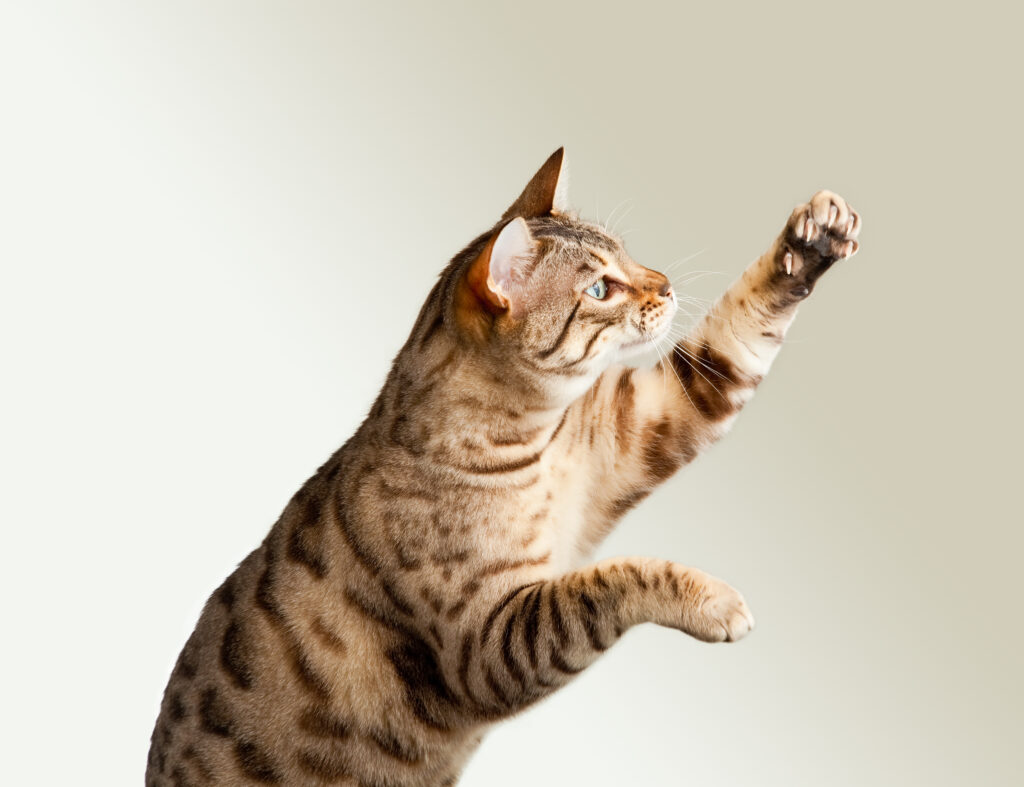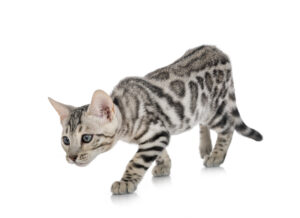Common Bengal cat behavior problems include litter box avoidance, aggression, and scratching. Learn how to treat these behaviors to make your Bengal kitty a happier, healthier cat. These cats are extremely intelligent, so they cannot be bribed to behave. With proper training, these problems can be solved through distraction. Read on to discover some of the most effective methods for solving Bengal cat behavior issues. If you have these behaviors in your Bengal cat, you are not alone!
Common Bengal cat behavior problems
If you’ve recently adopted a Bengal cat, you might be concerned about its typical behaviors. Typical Bengal cat behaviors include scratching, vocalizing, playing with water, and chasing toys. These behaviors are often a result of boredom, thirst, or hunger, and they may even be indicative of common Bengal cat behavior problems. Luckily, there are ways to handle these issues and prevent your Bengal from displaying signs of aggression or violence.
Bengal cats can exhibit a variety of common behavior problems, including biting, meowing loudly, and soiling your home. They often mark their territory with urine, but sometimes they overdo it. Some Bengals also display aggression, while others exhibit more docile behavior. However, while the majority of Bengal cat behavior issues are not distinctly Bengal-specific, they are worth addressing to prevent your feline friend from acting out.
Other problems that a Bengal cat may show include aggression, territoriality, and lack of socialization. Bengal cats may also have been abused or attacked by people and animals, so they may be prone to lash out in anger to protect themselves. If your Bengal cat is not ready for handling, it may show signs of aggression by swatting at you, fleeing, or biting, so be careful when handling him. To make things easier for you, try using a soft voice and let them see that you are not going to pick them up.
Litter box avoidance
Cats that avoid using the litter box may be experiencing a variety of behavioral issues, from the scent of their surroundings to the need for more space. It is possible to encourage your Bengal to use the litter box by placing calming objects near it. Other ways to encourage your cat to use the litter box include using deterrents that keep it from using a location where it isn’t welcome. Aluminum foil and scat mats are both excellent deterrents.
The behavior of not using the litter box is not unique to Bengal cats. It is not a sign of inferiority, but rather a behavioral trait that develops over some time. Bengal cats often mark their territory by peeing and urinating on vertical surfaces and horizontal ones. While this behavior is frustrating for both you and your cat, it can be corrected by using a process of elimination.
One of the best ways to resolve this problem is to replace the litter box with a 360-degree view. By allowing your Bengal to see the litter box, he or she will have more confidence to use it and will be less prone to ambushes. You can also place multiple litter boxes, each offering different options to your Bengal. If this doesn’t work, you can always move the litter box back to the place it was most reliable.
Aggression
Many Bengal cats exhibit aggressive behavior, and it can be very difficult to housebreak. Because they are so hyperactive and under-stimulated, they tend to act out to entertain themselves. These cats may claw at furniture or tip things over on counters. They can also be demanding or noisy when they are in your home. Left untreated, these behaviors can grow out of control. Here are some tips for preventing aggressive behavior in Bengal cats.
First, learn how to train your Bengal cat to behave. A Bengal can bite its owner at will when he or she feels threatened. Biting is normal for a young Bengal with developing teeth. You can determine if your Bengal is biting excessively by observing their behavior. It is also important to understand that aggressive behavior may upset guests in your home. Once you have determined the cause of aggression, you can begin training your cat.
Second, understand that the cause of the aggression is usually play-related. Bengal cats often exhibit play-related aggression, which is a result of unused energy or under-stimulation. This behavior is often accompanied by unruly play, and can even result in injury to owners or other pets. Although play aggression is common during kittenhood, it can continue into adulthood. As a result, owners should be prepared to deal with these problems calmly and reasonably.
Scratching
Scratching is a common behavior among Bengal cats. These cats are crossbred between the wild Asian Leopard cat and the domestic cat and are prone to scratching anything that is not scratchable. Scratching is a common Bengal cat behavior problem, but you can correct the behavior if you notice the symptoms of a scratching problem. You can use a scratching post or other toys to provide entertainment for your Bengal cat. Or, you can use eucalyptus oil or double-sided tape to repel the cat.
If you see your Bengal cat scratching frequently, it could be due to a health issue or boredom. If your cat is scratching around the litter box, it might be a sign of a bladder infection, diabetes, or kidney problems. It could also be an indication that your Bengal cat is having a urinary tract infection. Your veterinarian can determine if your cat is suffering from a bladder infection or has kidney or urinary tract problems. You should discuss the behavior with your veterinarian and make sure to give the veterinarian an accurate account of what is happening.
A luxating patella is another common cause of a Bengal cat’s scratching. This common cat problem affects cats of all breeds. While some Bengals don’t have luxating patellas, others can be prone to the condition. The problem can cause sudden or prolonged lameness, resulting in degenerative arthritis. The treatment for luxating patellas is usually to keep the cat in a healthy weight range, but in more severe cases, surgery is required.
Biting
If you have a Bengal cat, you probably know that they can bite. However, this behavior is not unusual for young Bengals, as their teeth are still developing. But as they get older, they can start to draw blood. The good news is that you can train your Bengal cat to not bite people. Here are some tips to help you teach your Bengal how to behave properly. A Bengal cat that is constantly bored can develop biting problems.
Biting: The most common behavior problem that Bengal cats display is a reaction to being picked up. Although they are playful, these animals can bite their owners’ hands. To play with their new toys, owners often mistakenly associate their hands with a toy, causing them to bite their owners. The result is painful injuries and a habit that is likely to continue into adulthood. In addition, as the cat gets older, their teeth will become larger.
Other Bengal cat behavior problems include chewing furniture and destroying belongings. As mentioned, Bengals enjoy playing with water. Oftentimes, they will jump into the shower with their owners. They may also knock over water glasses or play in the toilet or fish tank. If you notice these behaviors, try changing their environment and providing water differently. The Bengal cat may also prefer to use the bathroom in an alternate place than the usual, but it is worth noting that these problems are rarely permanent.
Inquisitiveness
Inquisitiveness in Bengal cat behavior problems can lead to a host of issues, from chewing on furniture to staring at other animals. Bengals are hyperactive and will explore everything that they come in contact with. This hyperactivity and need to explore can lead to problems, such as destructive chewing, and if your cat hates the litter box, you may have to get a new litter box.
Inquisitiveness can also be the cause of other Bengal cat behavior problems, including play aggression. This behavior may be a result of under-stimulation, excessive energy, and unused territory. This behavior is most common in kittens, but it can also manifest itself in more aggressive behavior later in life. Often, the aggression begins when the Bengal cat is young and continues into the adult stage.
While you might be wondering how to deal with your Bengal cat’s water-related behavior, you must keep in mind that the breed has its own unique needs. If you’re a new Bengal cat owner, you may need to consult with a veterinarian to determine what’s the best course of action for your cat. You may also want to consider the Bengal breeder’s website for more information.
Another common Bengal cat behavior problem is a refusal to be picked up. This problem can be prevented by socializing your Bengal cat with other cats from kittenhood. Eventually, the cat will learn to accept other cats as part of the household. Until then, however, you can try using treats to pick up an adult Bengal. This practice will teach your Bengal that you are not a threat. If this doesn’t work, it may be time to consider getting a new Bengal.





